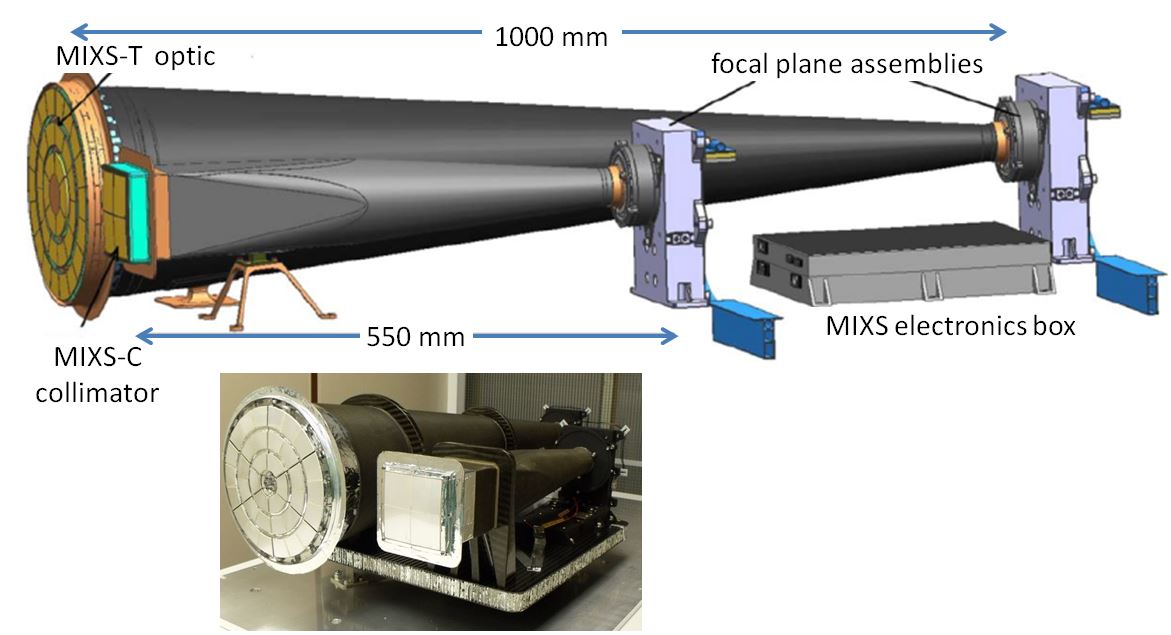MIXS - BepiColombo
MIXS
mercury imaging x-ray spectrometer

science goals
The Mercury Imaging X-ray Spectrometer (MIXS) has three main scientific aims. Firstly to produce global elemental abundance maps of key rock-forming elements to an accuracy of 5-50% depending on concentration. Secondly to perform high spatial resolution mapping of these elemental abundances where solar conditions permit, and lastly to confirm that the auroral zone, where energetic particles interact with the surface, is an intense source of continuum and line X-rays. Achieving these objectives will allow to address key science issues of the origin of Mercury like the evolution, the nature of surface modifications (e.g. cratering, volcanism), and the structure and variation of the magnetosphere of Mercury.
MIXS is designed to perform X-ray fluorescence (XRF) analysis. This is a well-known technique for remote sensing of the atomic composition of airless, inner solar system bodies. All orbital XRF experiments rely on solar coronal X-rays to provide the primary illumination. The Sun excites K and L shell fluorescence line emission in the top few microns of the surface, which is characteristic of the surface abundance. XRF in the 0.5-7.5keV energy range allows the absolute quantification of the elemental abundances of light rock forming elements – from Mg to Fe. A prerequisite for achieving this absolute quantification is the full characterization of the highly variable incident solar flux. MIXS will obtain this reference information from its partner instrument, SIXS (Solar Intensity X-ray and particle Spectrometer).
measurement principle
The science return from the MIXS instrument depends on the intensity and spectral slope of the exciting solar spectrum, the conversion properties of the planetary surface, and on the effective areas and angular apertures of the instrument. The primary scientific goals of MIXS as described above can only be achieved using two optical elements together: MIXS-T is a true imaging telescope of low mass for high resolution, narrow field (1° FoV) mapping of the planetary surface. MIXS-C is a collimator providing efficient flux collection over a broad range of energies with a wide field of view (~10°). Both optical channels are read out by radiation hard, cooled (-45° C) back-illuminated silicon macropixel array approx. 20 mm square. The narrow field of view of MIXS-T is complemented by the collimator design of MIXS-C. The microchannel geometry here is similar to that of the so-called "lobster eye" telescope, except that the channel lengths are chosen to maximise the energy-independent "straight through" component of the flux, rather than the low energy focused component.
Operation of the MIXS instrument will take place continuously on the day- and night-side. Night side observations will be possible as there is a large flux contribution expected from auroral arcs at Mercury. The data will be processed and calibrated on the ground at the national institutes of the MIXS and SIXS institutes.
LINK TO SCIENCE DATASETS - COMING SOON
LINK TO USER MANUAL
- Removed a total of (1) style text-align:center;









































 Sign in
Sign in
 Science & Technology
Science & Technology